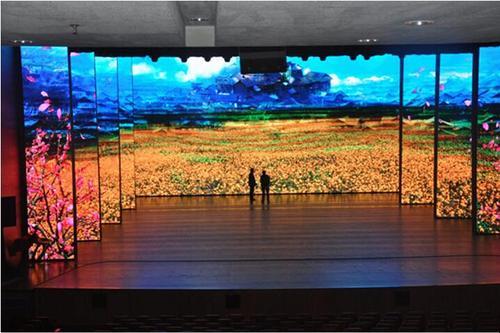Efficient Tactics for Addressing Temperature Challenges in LED Wall Panels
Wiki Article
Light Emitting Diode panel panels are increasingly common for multiple uses, such as promotion, events, and electronic screens. However, excess heat is a major challenge that can affect their functionality and longevity. When LED panels become too hot, they may dim, hue distort, or even malfunction entirely. Understanding the causes and applying efficient strategies to manage heat can help preserve the ideal function of LED panel screens. This piece will discuss several strategies to address excess heat challenges associated with these devices.
One powerful strategy for preventing excess heat in LED panel screens is ensuring proper airflow. It is essential to install these panels in settings where atmosphere flow is adequate. This can be achieved by placing the screens in a properly aired space or using blowers to enhance ventilation around the devices. Additionally, if the screens are installed in a tight area, creating openings or using vents can help dissipate heat more efficiently. Keeping a lower ambient temperature is vital, as it immediately affects the function and durability of LED panel screens.
Another way to address excess heat is through the application of thermal management materials. These materials can help absorb, dissipate, or deflect heat away from the LED components. Heat sinks are commonly used in many electronic devices, including LED panels. These metal components draw heat away from the light-emitting components, allowing them to function at a safer heat level. Additionally, heat-conducting compound or films can be applied to improve heat transfer between see the LED chips and the thermal sinks, further enhancing their chilling effectiveness.

Routine maintenance and monitoring of LED wall screens also play a critical part in preventing overheating. Dust and debris can accumulate on the surfaces of these panels, blocking ventilation and holding heat. Regular cleaning, using appropriate tools, will ensure the panels free from obstructions. Furthermore, monitoring the temperature of the panels can help detect overheating issues before they become critical. Using heat sensors can provide valuable data, allowing users to take corrective action if the panels start to exceed secure functioning heat levels.
The implementation of cutting-edge techniques can also help tackle excess heat issues in LED panel screens. Many contemporary LED panels come fitted with built-in thermal management systems. These systems can automatically adjust the brightness of the screen based on the temperature, reducing heat generation when necessary. Additionally, program solutions can track the functionality of the screens and provide notifications if overheating is detected. Using these tools can considerably enhance the durability and dependability of LED panel screens.
In summary, controlling overheating in LED wall panels is essential for ensuring their performance and durability. Applying methods such as ensuring proper airflow, using thermal management substances, performing routine care, and employing cutting-edge technology can help reduce overheating issues. By implementing these preventive steps, users can benefit from the complete advantages of LED wall panels while minimizing the risk of temperature-related issues. This method not only improves the performance of the panels but also adds to a much eco-friendly and efficient use of technology in various uses.